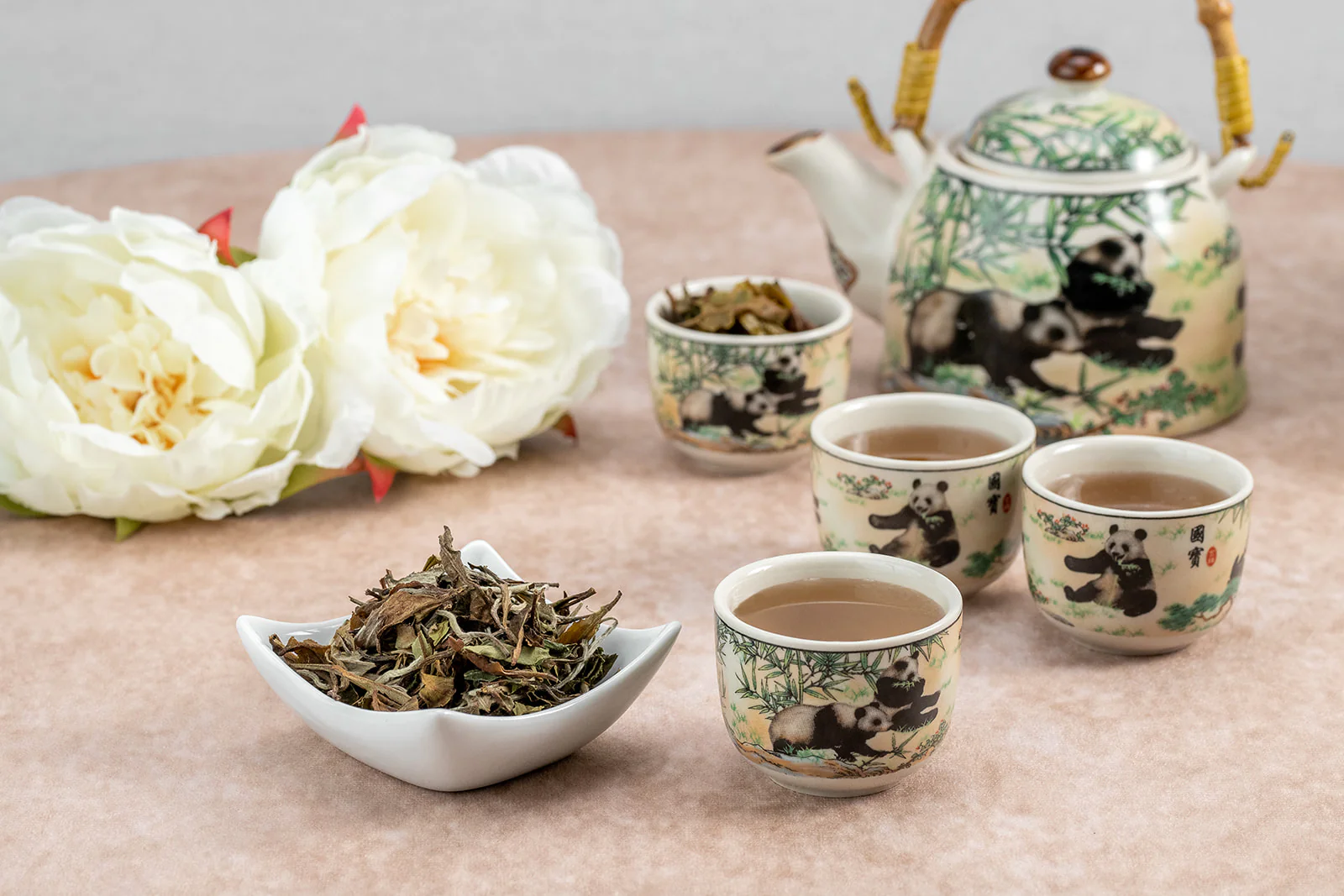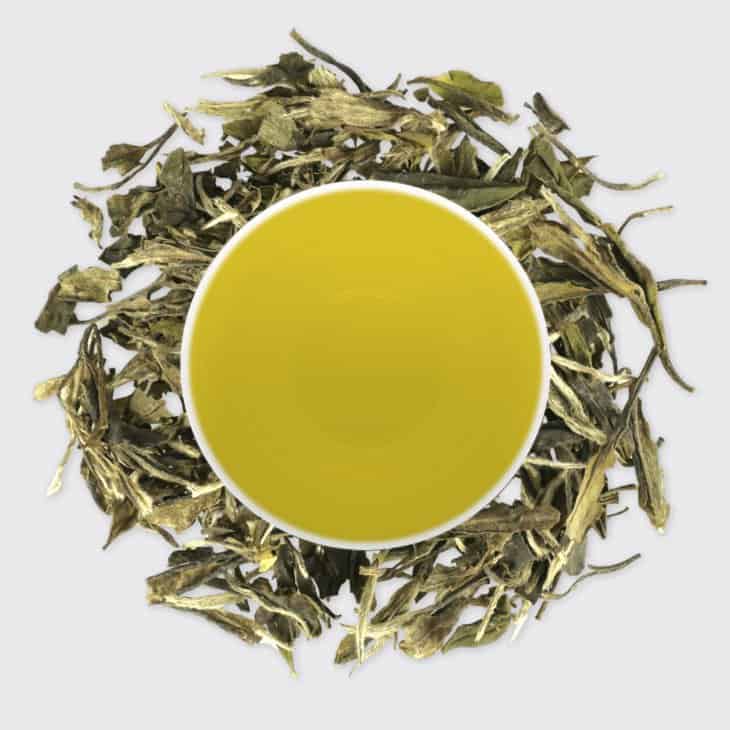Welcome, tea enthusiasts, to a captivating journey into the world of White Peony (Bai Mu Dan), an exquisite Chinese tea that embodies elegance and subtlety. In this article, we will delve into the fascinating history, brewing techniques, flavor profile, health benefits, and more of White Peony (Bai Mu Dan). So, grab your favorite tea cup, sit back, and let’s embark on this aromatic adventure!
Historical Roots of White Peony:
White Peony, also known as Bai Mu Dan or Pai Mu Tan, has a rich history that traces back to China’s Fujian province. This tea variety originates from the same region that gave birth to other renowned teas like Da Hong Pao and Tie Guan Yin. Here are some key points about its history:
🌱 Origins in Fujian:
White Peony tea has been cultivated in the Fujian province for over a century. Its production centers on the northeastern part of the province, particularly in the Fuding and Zhenghe regions.
🌿 Plucking and Processing:
White Peony is made from the plucking of young tea buds and leaves. The tea undergoes minimal oxidation, preserving its delicate characteristics. The processing involves withering, heat drying, and careful sorting to ensure the quality of the final product.
Symbolism and Prestige:
In Chinese culture, White Peony tea is revered for its purity, grace, and aesthetic beauty. It is often associated with noble qualities and is used as a gift to honor esteemed guests and celebrate special occasions.
Brewing White Peony: Mastering the Art:
Brewing White Peony requires attention to detail to fully unlock its flavors and aromas. Here are some essential brewing tips to ensure a delightful experience:
🌡 Water Temperature: Optimal water temperature for White Peony is around 175°F to 185°F (80°C to 85°C). Boiling water can scorch the delicate leaves, resulting in a bitter brew.
⏳ Steeping Time: Steep White Peony for 2 to 3 minutes for the first infusion. Subsequent infusions can be longer, gradually increasing the steeping time by 30 seconds to 1 minute for each subsequent brew.
🍶 Teaware: To enhance the tasting experience, use a porcelain or glass teapot or gaiwan to observe the tea leaves unfurl and appreciate their beauty. Alternatively, a brewing basket or infuser works well too.
💧 Leaf-to-Water Ratio: Use approximately 1 to 2 teaspoons (2 to 3 grams) of White Peony tea per 8 ounces (240 ml) of water. Adjust the amount according to personal preference for a stronger or milder infusion.
Flavor Profile and Aromas:
White Peony is known for its delicate and nuanced flavors, offering a sensory delight. Here’s a glimpse into its captivating taste and aromas:
🌼 Subtle Floral Notes: White Peony captivates with gentle floral undertones, often reminiscent of orchids and peonies. These floral notes are light and refreshing, allowing the natural sweetness of the tea to shine.
🍑 Fruity Undertones: Some White Peony varieties exhibit subtle fruity notes, including hints of peach, melon, and citrus. These flavors add a layer of complexity to the tea, providing a delightful balance.
🌿 Clean and Crisp: White Peony’s flavor profile is often described as clean and crisp, with a mild vegetal character. This refreshing quality makes it a fantastic choice for those seeking a light and invigorating tea experience.
White Peony vs. Silver Needle: A Comparison:
| White Peony (Bai Mu Dan) | Silver Needle (Bai Hao Yin Zhen) | |
|---|---|---|
| Leaf Quality | Bud and leaf sets | Silver buds only |
| Flavor | Delicate, floral, | Subtle, sweet, |
| fruity | melon-like | |
| Oxidation | Low to medium | Minimal |
| Aroma | Floral, light | Delicate, honey-like |
Health Benefits of White Peony:
In addition to its exquisite taste, White Peony offers various health benefits that make it a wise choice for tea lovers:
🌿 Rich in Antioxidants: White Peony is packed with antioxidants that help combat free radicals, supporting overall health and well-being.
🍃 Boosts Immune System: The tea’s natural compounds, such as catechins and polyphenols, contribute to a strengthened immune system, helping to ward off infections and illnesses.
🌸 Promotes Healthy Skin: Antioxidants present in White Peony tea help maintain skin health by reducing inflammation, fighting oxidative stress, and promoting a youthful complexion.
FAQs about White Peony:
Q1: Is White Peony tea naturally caffeine-free?
A1: White Peony contains a low to moderate amount of caffeine. While it has less caffeine compared to black or green tea, it is not entirely caffeine-free.
Q2: Can White Peony be brewed using cold water?
A2: Cold brewing White Peony is a wonderful alternative. Simply place the tea leaves in cold water and let it steep in the refrigerator overnight for a refreshing and mellow infusion.
Conclusion:
White Peony, with its captivating history, delicate flavors, and numerous health benefits, is a true gem in the world of Chinese teas. So, the next time you seek a tea experience that is both elegant and delightful, don’t forget to indulge in the sublime beauty of White Peony!
🎉 Fun Fact:
Did you know that the name “White Peony” is derived from the appearance of the tea leaves? When brewed, they unfurl gracefully, resembling the petals of a peony flower in full bloom.
Originally posted 2023-06-12 15:23:22.


